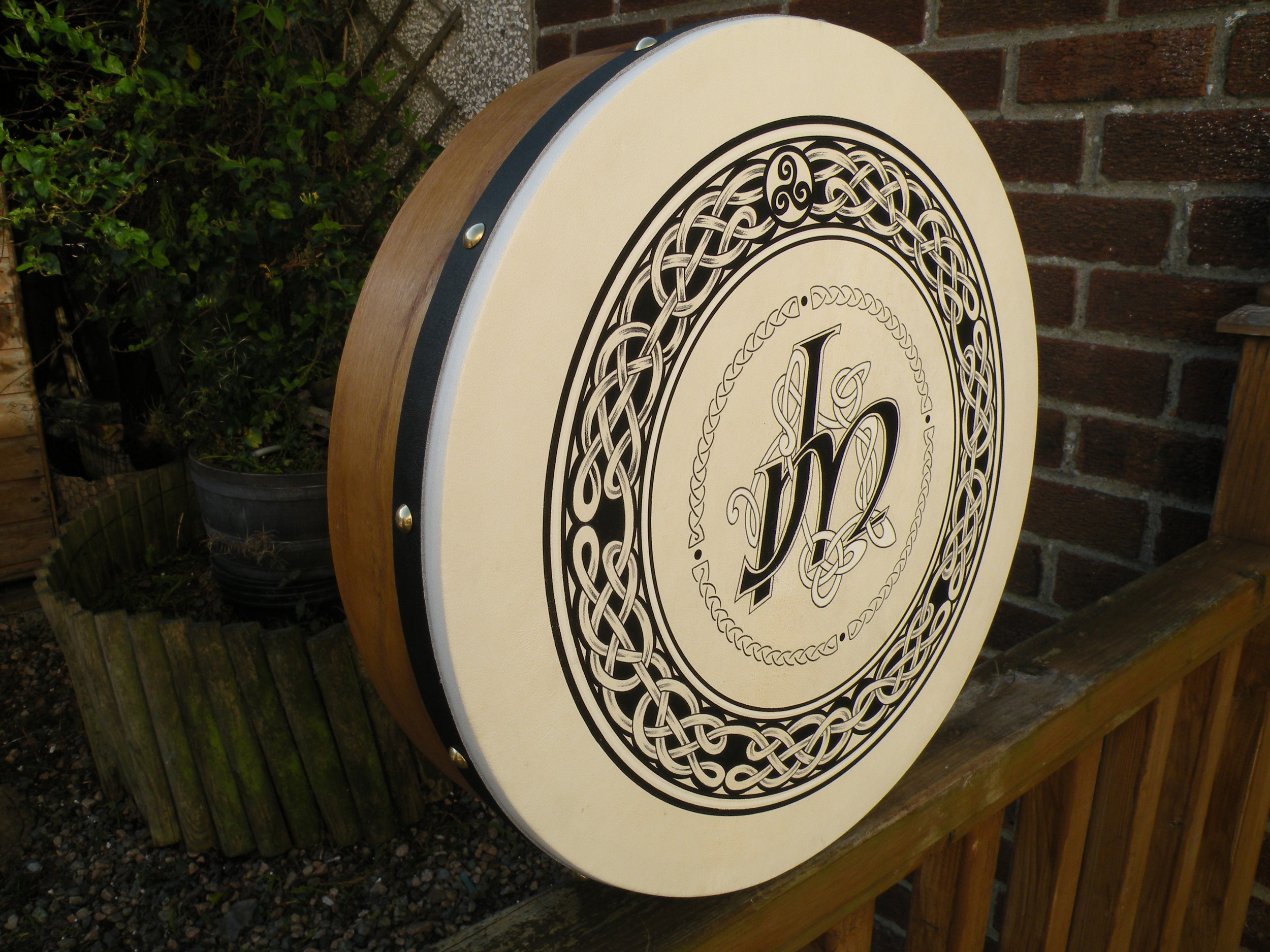history of the irish bodhrán drum
Irish bodhráns are framed drums, ranging from 22 to 70cm in diameter, with standard other drums measuring from 35 to 45cm. The bodhrán is made from goats-skin, stretched over the base. (Synthetic heads or other animal skins are sometimes used, but Barry's Bodhráns always use genuine goat-skin) The other side is open ended for one hand to be placed against the inside of the drum head to control the pitch. Barry's Bodhráns are decorative bodhrán drums only, not for musicians.
During the Irish rebellions that took place over centuries, including that of 1603 (where there is written evidence), the bodhrán was used by the Irish clans as a battle drum, or that the drum provided the beat for the pipers and celtic warriors to march to, as well as to strike fear into the enemy. On this basis, some scholars believe that the bodhrán was derived from an old Celtic war drum. Seán Ó Riada stated that bodhran is the native drum of the Celts, with a clear history that pre-dated Christianity.
The Bodhrán is somewhat similar to frame drums used widely across northern African from the middle east, and has similarities in musical instruments used for Arabic music and the musical traditions of the Mediterranean nations and beyond.
Another belief is that the origin of the instrument may be derived from the skin trays used in Ireland for carrying peat and potatoes; the earliest bodhrán may have simply been a skin and a wood frame tool for carrying, that made an appealing sound when struck, thus evolving into a musical instrument.

